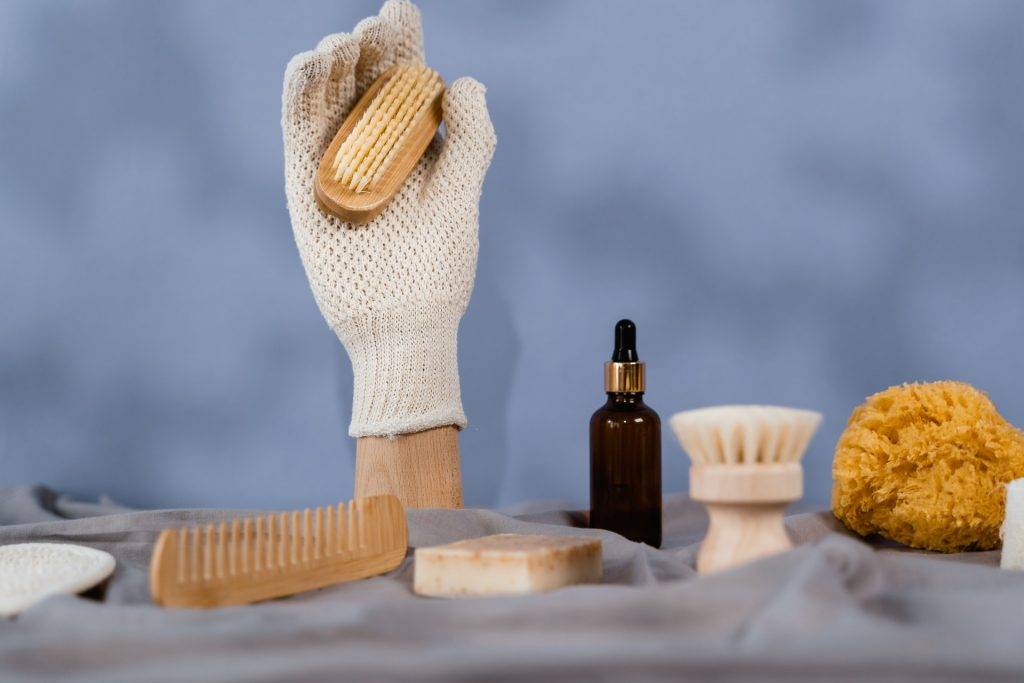Do Bath Sponge Harbor Bacteria?

Do bath sponges harbor bacteria? You’d be surprised. Some sources say yes. Sea sponges and loofahs contain enzymes that inhibit the growth of some bacteria. However, traditional shower sponges and synthetic bath poufs can harbor bacteria, too. Soaking them in a solution containing 5 percent bleach is a good way to kill bacteria, but this is a time-consuming process.
Sea Sponges Contain Enzymes That Inhibit The Growth of Some Kinds Of Bacteria
Recent studies have found that sea sponges contain bioactive compounds that inhibit the growth of some types of bacteria. These compounds are likely produced by the sponges’ associated bacterial symbionts. There is considerable variation in enzyme activities and antibacterial activity among different types of sponges. The lowest enzyme activity rates were found in the Antarctic sponge, M. acerata. Further research is needed to determine the influence of other biotic and abiotic variables on the antimicrobial activity of sponges. Future studies should focus on the discovery of new bioactive compounds produced by sponges.
This research reveals that sea sponges contain enzymes that inhibit the growth and proliferation of some types of bacteria. It is not entirely clear how these sponges control their growth but it has been suggested that their enzymatic activities play a role in protecting them from bacterial infections. Studies have suggested that the presence of lysozymes in sea sponges could help scientists understand the chemical defense mechanisms of sponges.
Loofahs Cause Microtrauma to The Skin
A common shower accessory, loofah sponges can be a source of infection. They can harbor bacteria and cause microtrauma to the skin. One case report described the secondary transmission of Streptococcus pyogenes from one infected body site to another, and the sponge was found to contain the same organism. In addition, this article outlines the treatment options for common cutaneous infections in athletes, as well as return-to-play recommendations.
A loofah is particularly risky for people with weak immune systems. This tool can transmit pathogenic bacteria. Additionally, dead skin cells can be caught in its folds and nooks, causing a whitehead pimple. Loofahs have been shown to cause a range of infections, including acne, rashes, and eczema. As a result, dermatologists advise against using loofahs.
Synthetic Bath Poufs Harbor Bacteria
Whether you love it or hate it, synthetic bath poufs can harbor bacteria. The same bacteria that thrive in septic tanks infect the sponges that make up a bath pouf. These bacteria are staphylococcus, a common cause of skin infections. Heat and moisture promote the growth of bacteria, and folliculitis can result. A few simple steps can help keep your pouf clean and safe.
Rinse your sponge after each use. If it is synthetic, soak it in bleach solution for 5 minutes. If it is made from natural materials, soak it for the same amount of time. Both natural and synthetic bath poufs should be air-dried after use. To prevent the growth of bacteria, you can wash your bath pouf every few days with water and dishwashing detergent. But remember that bleach is not a natural material, so it may not kill all the bacteria on the pouf.
Traditional Shower Sponges Harbor Bacteria
Traditional shower sponges are not only a waste of money, but they also contribute to the growth of harmful bacteria. They’re not hygienic and can lead to a buildup of bacteria and lead to skin infections. But there are alternatives! You can wash a washcloth in a machine or throw it in the washer after use. Here are some tips to clean your sponge. And remember, you don’t need to be a scientist to know that traditional shower sponges harbor bacteria.
One of the most important tips for preventing bacteria from growing on sponges is to wash them weekly. Disinfecting traditional sponges is difficult, but it’s necessary for preventing bacterial infections. They spread old bacteria while being used and then create new bacteria when they dry. You should also sterilize your sponge frequently since most traditional sponges are made of plastic or oils. Therefore, throwing them out contributes to plastic pollution, so it’s better to use an alternative.
About the Author

I am a writer who does research on the bathroom and researches whether minimalist or modern bathroom equipment and products. I will continue to write to make the time spent in the bathrooms enjoyable.
